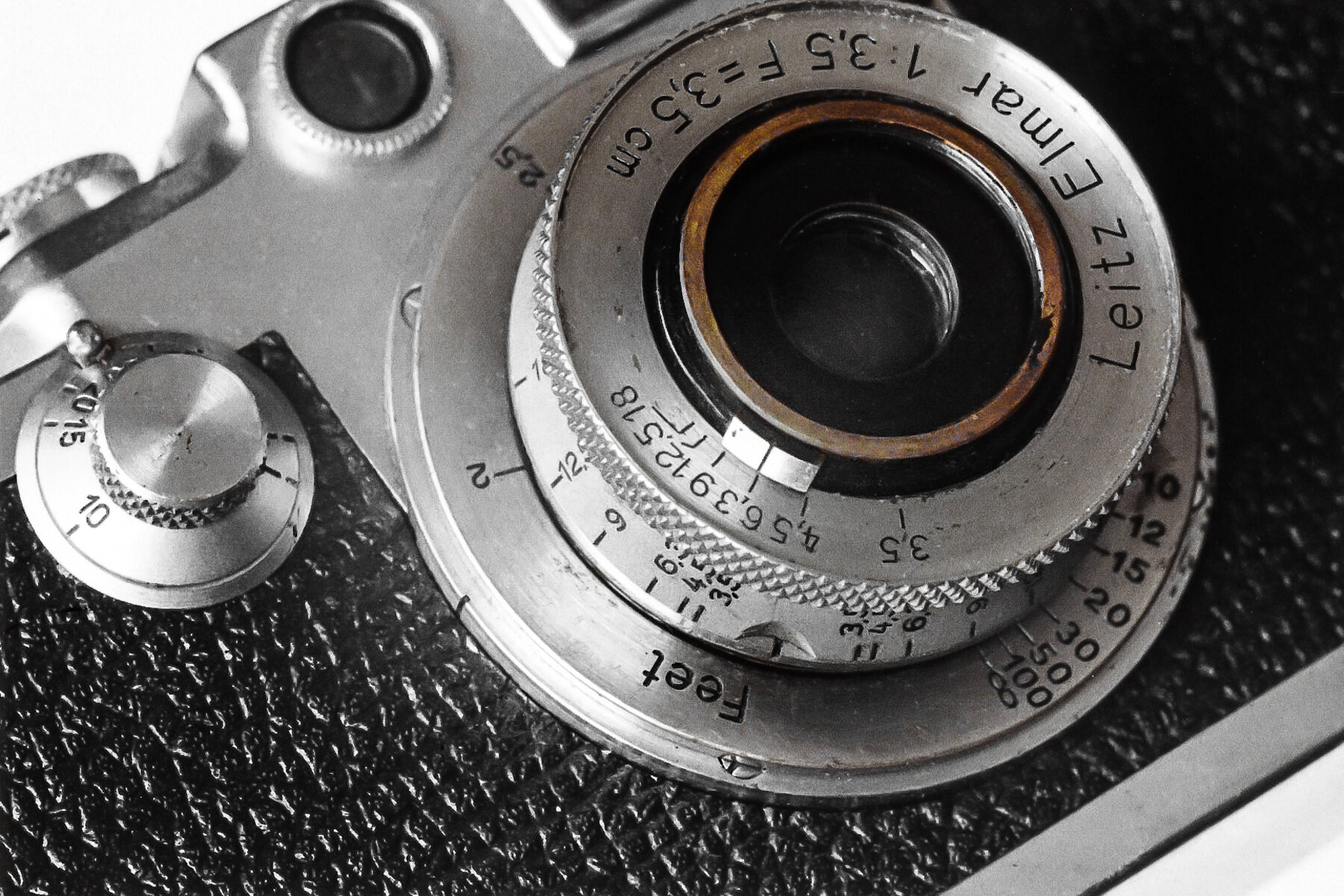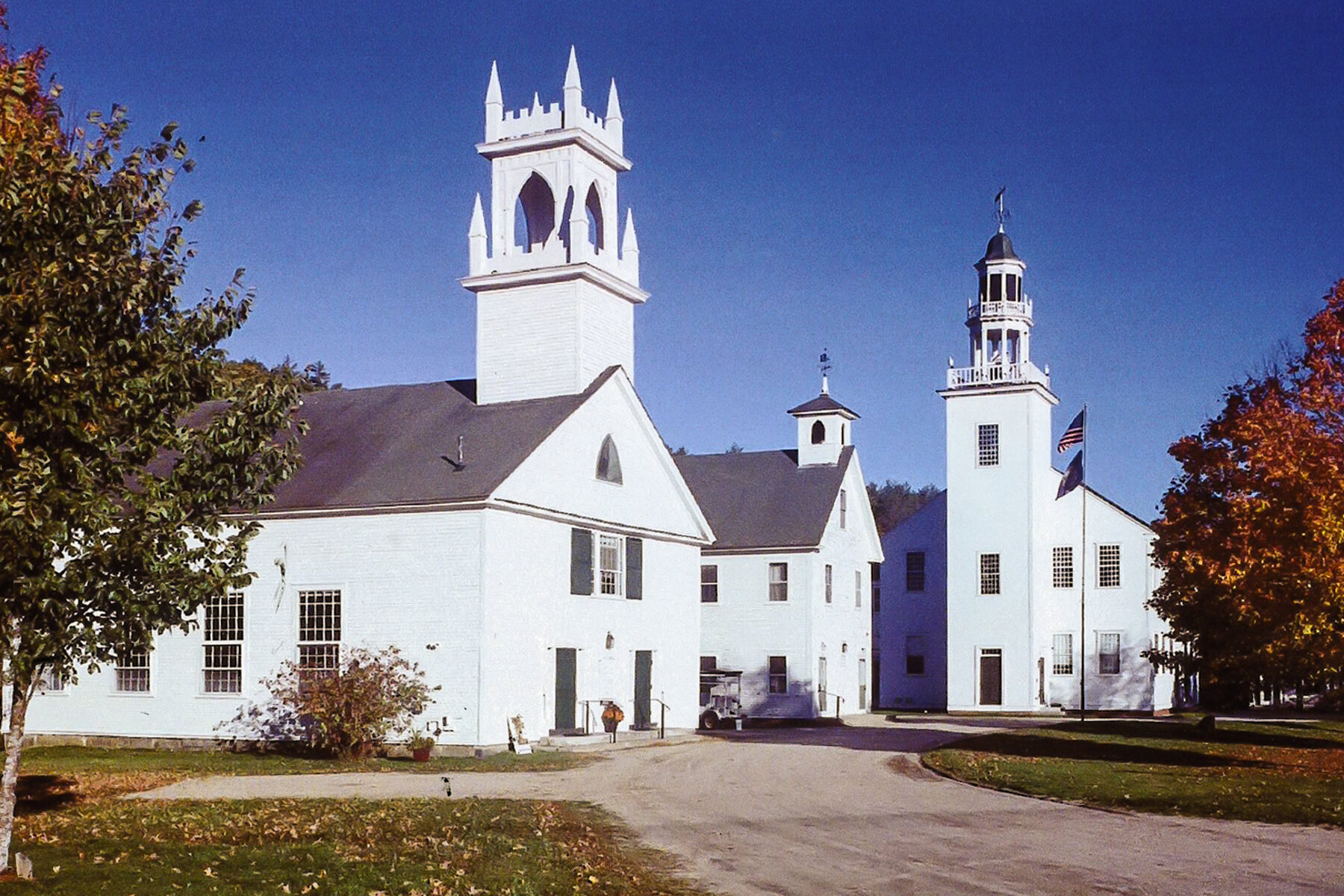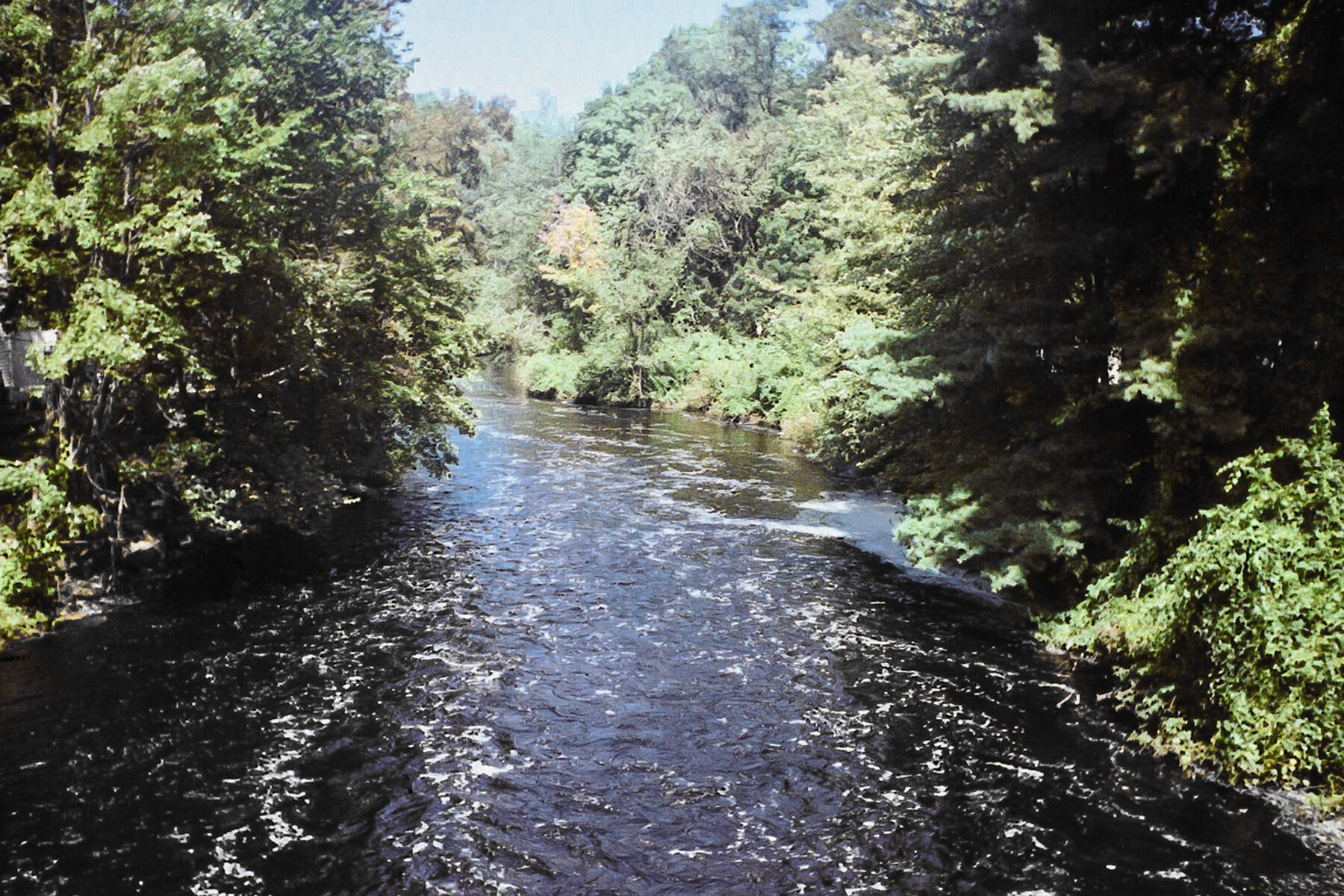An Unusual 35mm f/3.5 Elmar
Did you ever wonder how Eisenstaedt got that famous available light shot of the girl in the box at the La Scala Opera House with such a nice flat field when using his wide angle lens wide open? Or Stackpole's wide angle shot of the Mayor of Paoli reading a newspaper on Main Street, perfectly sharp from the newspaper four feet away to the clock face on top of the town hall tower way across the street? Both pictures were made in the 1930's using Leitz wide angle 35mm f/3.5 Elmar lenses. And both pictures reveal both deep depth and a very flat field. The first shot was made wide open with focus only about four or five feet away, with the distant tiers of balcony boxes somewhat beyond the depth of field, but showing no curvature. And the second showed sharp and deep depth at a small aperture all the way from four feet at the bottom of the frame to infinity at the top edge.
Most of us old timers have tried 35mm Elmars at one point or another and found them almost always to have a more or less curved field, especially wide open. This is also true of the 35mm f/3.5 Summarons. Well, some early 35 Elmars did have flat fields, and some of those selected 35 Elmars were used by professionals well into the 1950's -such as by the two photographers above, as well as in W. Eugene Smith's famous Spanish Village and Nurse Midwife photo essays, for instance. After that there were no really flat field 35's until the first Summicron came out in 1958 - along with that unbeliev- ably wide f/2 aperture!
Back then, as with all lenses, there was (and still is) some variation in performance levels between individual examples. A pro would test several examples of a lens anq pick the one he found best exhibited the qualities he wanted. A flat field was one of those desired qualities. But what happened to that selected lens after the pro used it? It might have been kept for back- up, or sold to a fellow photographer, or bought by a collector. That means very few of the best examples of a particular lens are rarely ever found on the used market.
Well, once in a while one might come along. This may be one of them. It is a 35mm f/3.5 Elmar, in early nickel finish. Its first unusual feature is the focus lever, with no infinity lock, which stands at the 12 o'clock position - straight up - when the lens is mounted on a camera. On closer examination the lens has no serial number and no rangefinder coupling, but it does have a stan- dardized "O" on the mount. The lack of coupling puts the year of manufac-ture no later than 1931. Or possibly 1930, having had the standardized mount fitted to it in 1931. The focus scale is calibrated in feet, with a com- plete depth of field scale, and - even more interesting - it goes down to closeup focus somewhat beyond the closest marked distance of two feet! The calibration in feet would make it intended as an import to England or the U.S. It is uncoated, of course, still fairly clean inside, with aperture blades in good condition and moving freely as though it was kept in shape for use. Evidence of black repainting in the inside rear of the mount might indicate disassembly for cleaning at some point, but it was never range- finder coupled.
Once tried out on a camera, its performance is impressive. Wide open it is quite evenly sharp over the whole field contrast, not too low even with its lack of coating, and it handles bright light at the edges of the field well. But the big surprise is that it has a very flat field! Even wide open! Next checked was the minimum focus, the closest marked two foot setting accurate when measured with a yardstick, and the unmarked closest focus testing out to be 19 inches from the focal plane.
It might have been the property of an amateur or pro who got it to use in its early days, and who then perhaps kept it and continued to use it on a stan- dardized camera without a rangefinder? The 12 o'clock lever would suggest that the lens is a very early example, possibly a prototype, or maybe modified when changed to "0" mount in 1931? But it does have that flat field, and might have been kept for that reason.
Researching close-focus 35 Elmars, the author has seen four reported, all scaled in meters. One was reported by B. Bawendi in the British Leica Society Newsletter (No. 86, 2009. p. 22,) with a picture of the lens not mounted on a camera. A second is mentioned in Dennis Laney's Leica Collectors Guide (1992 Ed., page 142) listing a lens under "variations" focusing to 0.5 meters, not illustrated. A third is shown in a photo in Jim Lager's Leica Illustrated Guide II (1978, paperbound) on page 16, upper left, showing 35 Elmar No. 107 mounted on a non-standard Leica C. It is also scaled in meters, with standard 11 o'clock focus lever. The same photo is seen in Lager's later Leica: An Illustrated History, Volume II - Lenses (1994, hardbound) on page 15, plus a second non-standardized metric 35 Elmar No. 585 shown mounted on Leica C No. 53585. It also has an 11 o'clock mount, and the angle of the photo shows a depth of field scale.
This early 35mm Elmar is still very usable, but more importantly it provides an interesting look into the newest gear that became available to a photo- grapher beginning in 1930, and for that matter all the 90 years since. Ima- gine, in those days of tripoded 5x7 and larger glass plate photography, being able to easily handhold an exposure - combining enough width and depth and speed together - to cover and stop the action in a large area of activity such as in a flooded town square? We have seen that was what Barnack was aiming for in the slightly narrower 40mm pictures he made in 1920, and the resulting wider angle 35mm lens that came from his efforts is still one of the most used focal lengths, being copied and produced by all camera makers from then on into the present digital era. It was Oscar Barnack and Prof. Max Berek - with the help of Ernst Leitz II -who invented it.
scene on a Peterborough NH town street with depth from
the close flowers almost to infinity. Handheld exposure at f/18. Focus was
at a pre-set 6 feet, the DOF scale showing depth from a little over 3 feet
to 50 feet
This angle was picked to illustrate the
flat field of the 35mm Elmar, made during a recent
NH covered bridge shoot with friend and
fellow Viewfinder author Norm Woodward.
Focus was set at about 15 feet, with Norm
about 12 feet away. Aperture was set at f/4.5,
and examination of the depth of field scale
showed depth from 9 feet to 50 feet. Look at
the relatively sharp telephone pole and wires at
the far right edge. It demonstrates the flat field
A lens having a positive curvature of field -
where focus is closer to the camera around
the edges of the frame - would not be able to
render the distant pole and wires as clearly as
this at the edge of the frame, especially when
it's beyond the DOF limit.






